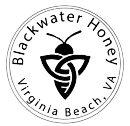Bee Facts
Fun Facts About Honeybees
- Bees pollinate 80% of the world’s plants including 90 different food crops.
- 1 out of every 3 or 4 bites of food you eat is thanks to bees.
- The honey bee is responsible for $15 billion in U.S. agricultural crops each year.
- Honey is the only food that does not spoil (bacteria can’t grow in it, and because of its low moisture content and low pH – honey can last indefinitely).
- Bees maintain a temperature of 92-93 degrees Fahrenheit in their central brood nest regardless of whether the outside temperature is 110 or -40 degrees.
- The honey bee is the only insect that produces food eaten by man.
- Man’s first alcoholic beverage, mead, is a wine made with honey.
More Bee-Bits
- Honeybees are not native to the USA. They are European in origin and were brought to North America by the early settlers.
- Honeybees are not aggressive by nature, and will not sting unless protecting their hive from an intruder or are unduly provoked.
- Honeybees represent a highly organized society, with various bees having very specific roles during their lifetime: e.g., nurses, guards, grocers, housekeepers, construction workers, royal attendants, undertakers, foragers, etc.
- The queen bee can live for several years. Worker bees live for 6 weeks during the busy summer, and for 4-9 months during the winter months.
- The practice of honey collection and beekeeping dates back to the stone age, as evidenced by cave paintings.
- The honeybee hive is perennial. Although quite inactive during the winter, the honeybee survives the winter months by clustering for warmth. By self-regulating the internal temperature of the cluster, the bees maintain 93 degrees Fahrenheit in the center of the winter cluster (regardless of the outside temperature).
- Pollination: Agriculture depends greatly on the honeybee for pollination. Honeybees account for 80% of all insect pollination. Without such pollination, we would see a significant decrease in the yield of fruits and vegetables.
- Pollen: Bees collect 66 lbs. of pollen per year, per hive. Pollen is the male germ cells produced by all flowering plants for fertilization and plant embryo formation. The Honeybee uses pollen as food. Pollen is one of the richest and purest natural foods, consisting of up to 35% protein, 10% sugars, carbohydrates, enzymes, minerals, and vitamins A (carotenes), B1 (thiamin), B2 (riboflavin), B3 (nicotinic acid), B5 (pantothenic acid), C (ascorbic acid), H (biotin), and R (rutine).
- Honey: Honey is used by bees for food all year round. There are many types, colors and flavors of honey, depending on its nectar source. The bees make honey from the nectar they collect from flowering trees and plants. Honey is an easily digestible, pure food. Honey is hydroscopic and has antibacterial qualities. Eating local honey can fend off allergies.
- Beeswax: Secreted from glands, beeswax is used by the honeybee to build honeycomb. It is used by humans in drugs, cosmetics, artists’ materials, furniture polish and candles.
- Propolis: Collected by honey bees from trees, the sticky resin is mixed with wax to make a sticky glue. The bees use this to seal cracks and repair their hive. It is used by humans as a health aid and as the basis for fine wood varnishes.
- Royal Jelly: The powerful, milky substance that turns an ordinary bee into a Queen Bee, Royal Jelly is made of digested pollen and honey or nectar mixed with a chemical secreted from a gland in a nursing bee’s head. It commands premium prices rivaling imported caviar and is used by some as a dietary supplement and fertility stimulant. It is loaded with all of the B vitamins.
- Bee Venom: Bee Venom is the “ouch” part of the honeybee. Although sharp pain and some swelling and itching are natural reactions to a honeybee sting, a small percentage of individuals are highly allergic to bee venom. “Bee venom therapy” is widely practiced overseas and by some in the USA to address health problems such as arthritis, neuralgia, high blood pressure, high cholesterol and even MS. Scrape the stinger sideways from your skin using a hive tool, long fingernail or credit card. If you pinch or squeeze the venom sack attached to the stinger, you risk squeezing the venom into your skin even more! You will get 1/3 the bee venom with the scraping technique. After that, the pain will subside within 5 minutes and you can take an antihistamine to reduce swelling. Otherwise, there isn’t much you can do to treat the sting itself.





